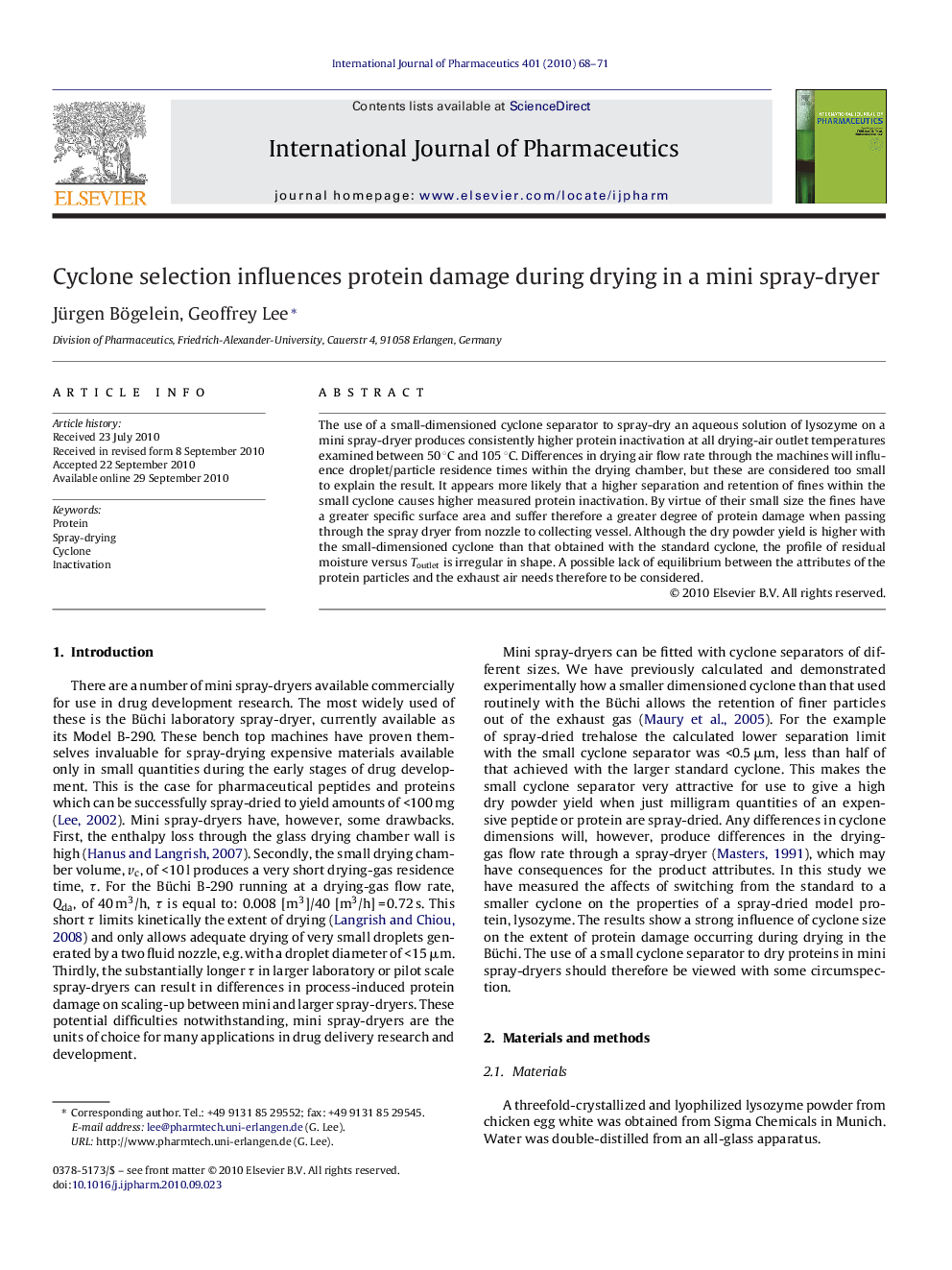| Article ID | Journal | Published Year | Pages | File Type |
|---|---|---|---|---|
| 2503677 | International Journal of Pharmaceutics | 2010 | 4 Pages |
The use of a small-dimensioned cyclone separator to spray-dry an aqueous solution of lysozyme on a mini spray-dryer produces consistently higher protein inactivation at all drying-air outlet temperatures examined between 50 °C and 105 °C. Differences in drying air flow rate through the machines will influence droplet/particle residence times within the drying chamber, but these are considered too small to explain the result. It appears more likely that a higher separation and retention of fines within the small cyclone causes higher measured protein inactivation. By virtue of their small size the fines have a greater specific surface area and suffer therefore a greater degree of protein damage when passing through the spray dryer from nozzle to collecting vessel. Although the dry powder yield is higher with the small-dimensioned cyclone than that obtained with the standard cyclone, the profile of residual moisture versus Toutlet is irregular in shape. A possible lack of equilibrium between the attributes of the protein particles and the exhaust air needs therefore to be considered.
